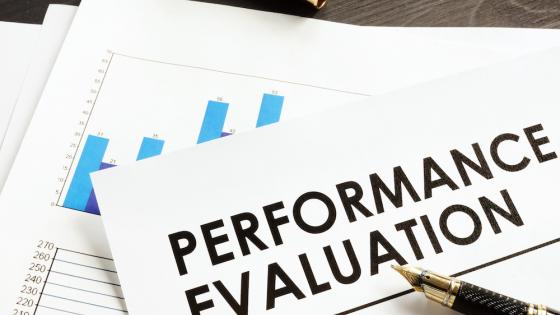Employee performance evaluation is a crucial aspect of any organization. It is the process of assessing an employee’s performance in terms of productivity, quality of work, behavior, and achievements. Evaluating employee performance is important for both the employer and the employee. It helps the employer identify the areas where the employee needs improvement and rewards the employee for their hard work. In this blog, we will delve into the importance of employee performance evaluation, the types of performance evaluation methods, and how to conduct an effective evaluation.
Contents
What is Employee Performance Evaluation?

Employee performance evaluation is the process of assessing an employee’s job performance and productivity within a company or organization. It typically involves reviewing an employee’s performance against pre-established standards or goals and providing feedback on areas that need improvement, as well as acknowledging areas where the employee has excelled.
The goal is to provide a fair and accurate assessment of an employee’s contributions to the organization and to identify areas for growth and development.
Importance of Employee Performance Evaluation
Employee performance evaluation is an important process for any organization. Here are some reasons why it is so important:
- Provides feedback: Employee performance evaluations provide valuable feedback to employees on their job performance. Employees can learn what they are doing well and what they need to improve on. This helps them to grow and develop in their roles.
- Establishes expectations: Performance evaluations help to establish expectations for employees. They help employees understand what is expected of them and what they need to achieve to be successful in their roles.
- Identifies areas for improvement: Performance evaluations identify areas where employees need to improve. This helps managers to provide targeted training and development opportunities for employees to improve their skills and knowledge.
- Recognizes achievements: Performance evaluations recognize and acknowledge employees for their achievements. This helps to boost employee morale and motivation and encourages employees to continue to perform at a high level.
- Informs decisions: Performance evaluations provide valuable information that can inform decisions about promotions, salary increases, and other employment-related decisions. They help to ensure that decisions are fair and based on objective criteria.
- Facilitates communication: Performance evaluations facilitate communication between employees and managers. They provide a forum for employees to discuss their job performance, career goals, and other concerns with their managers.
Types of Employee Performance Evaluation Methods

There are several types of employee performance evaluation methods that organizations use to assess the job performance of their employees. Here are some common types:
Graphic Rating Scale
This is a traditional and widely used method that involves rating employees on a scale for various performance factors. The performance factors may include job knowledge, quality of work, productivity, communication, teamwork, and attendance. This method is often used to compare the performance of employees to predetermined standards.
Behavioral Observation Scale
This method involves observing and measuring the behavior of employees on specific performance factors. For example, an employee may be evaluated on their ability to communicate effectively, their leadership skills, or their ability to work collaboratively with others.
360-Degree Feedback
This method involves gathering feedback from multiple sources, including the employee, their supervisor, peers, and customers. This provides a comprehensive view of an employee’s job performance from multiple perspectives.
Management by Objectives (MBO)
This method involves setting specific, measurable, and achievable objectives for employees, which are agreed upon between the employee and their manager. The employee’s performance is then evaluated based on how well they have achieved their objectives.
Self-Evaluation
This method involves employees evaluating their job performance. Employees are asked to assess their strengths and weaknesses, set their own goals, and identify areas for improvement.
Critical Incident Method
This method involves documenting specific incidents or events where employees demonstrated exceptional job performance or areas where they need improvement. This method is often used to provide specific feedback to employees and to develop action plans for improvement.
Forced Ranking
This method involves ranking employees from best to worst based on their performance. This can be a contentious method, as it can create a competitive environment and may not take into account the unique strengths and weaknesses of each employee.
Essay Method
This method involves managers writing an essay about an employee’s job performance. This allows for a more detailed and personalized evaluation of an employee’s job performance but can be time-consuming for managers.
Peer Evaluation
This method involves employees evaluating the job performance of their colleagues. This can provide a unique perspective on an employee’s job performance, but can also be subject to bias or inaccurate assessments.
Continuous Performance Management
This method involves ongoing feedback and coaching between managers and employees throughout the year. This allows for timely feedback and adjustments to an employee’s job performance, rather than waiting for an annual review.
How to Conduct an Effective Employee Performance Evaluation Method?

Conducting an effective employee evaluation is crucial to the success of any organization. Here are some steps to follow when conducting an employee evaluation:
- Set Clear Goals and Expectations: Before the evaluation, ensure that both the employee and the manager are clear on the employee’s job responsibilities, goals, and expectations. This ensures that the employee is aware of what is expected of them and provides a clear benchmark for evaluating performance.
- Use a Consistent Evaluation Method: It is important to use a consistent evaluation method for all employees to ensure that evaluations are fair and objective. Select a method that aligns with the organization’s culture, goals, and objectives.
- Provide Regular Feedback: Provide regular feedback throughout the year to employees, not just during the evaluation period. This allows for ongoing improvement and helps employees to feel supported and engaged.
- Focus on Specific Examples: During the evaluation, use specific examples to illustrate areas where the employee excelled and where improvement is needed. This makes the evaluation more objective and helps the employee to understand what they need to improve.
- Identify Actionable Steps: During the evaluation, identify actionable steps that the employee can take to improve their job performance. This could include training and development opportunities or setting specific goals for improvement.
- Be Open and Honest: During the evaluation, be open and honest with the employee. This allows for a productive discussion about job performance and ensures that the employee understands what they need to do to improve.
- Follow-Up: Following the evaluation, follow up with the employee to ensure that they understand the feedback and are taking actionable steps to improve their job performance.
Which Method Can Managers Select?
When selecting a performance evaluation method, managers should consider the needs of the organization, the job responsibilities of the employee being evaluated, and the desired outcomes of the evaluation. Some factors that managers may consider when selecting a performance evaluation method include:
- Goals of the evaluation: What is the purpose of the evaluation? Is it to provide feedback to the employee, inform promotion and salary decisions, or identify areas for improvement?
- Employee job responsibilities: What are the specific job responsibilities of the employee being evaluated? Which performance factors are most important for their job performance?
- Company culture: What is the organizational culture and how does it affect the performance evaluation process?
- Time and resources: What are the time and resources available for the evaluation process?
- Fairness and objectivity: How can the evaluation method be made as fair and objective as possible?
Once managers have considered these factors, they can select a performance evaluation method that aligns with their organization’s needs and goals. Managers need to be trained on how to conduct an effective evaluation using the selected method and to ensure that evaluations are consistent and fair across all employees.
Conclusion
In conclusion, conducting employee performance evaluations is a critical process that provides valuable feedback to employees. By selecting an appropriate performance evaluation method and following effective evaluation practices, managers can provide valuable feedback to their employees and encourage their growth and development in their roles.
As such, organizations need to invest time and resources in conducting effective employee performance evaluations to ensure a positive and productive work environment.
Employee wellness programs are the key to improving employee motivation, productivity, and retention. At MantraCare, we have a team of health experts, counselors, and coaches who serve corporate employees with 10+ well-being programs including EAP, Employee Diabetes Reversal, Corporate MSK, Employee Fitness, Corporate Yoga, and Employee Meditation.
